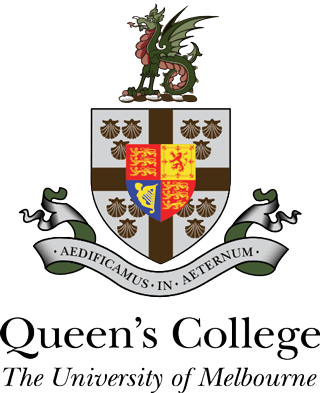From the Archives: Mary Clementina de Garis
[section]
[row]
Mary Clementina de Garis – Medical Trailblazer
During the 2017 Student General Meeting, a previously informal women’s group was formalised into a new sub-committee of the QCS&SC. This group was conceived to help the women of Queen’s flourish by providing a unique support network and developing new and special traditions that they can call their own, cementing their historical place at College.
This new sub-committee is known as the Clementine Club. So who is the ‘Clementine’ that the name refers to?

The Club’s namesake is Mary Clementina de Garis – a medical trailblazer – the 31st woman to enrol in Medicine at the University of Melbourne, and the second woman in Victoria to be awarded a Doctorate of Medicine. Her story is one of determination, persistence and service as she forged her path working around many of the prevailing attitudes of the time.
Mary Clementina de Garis came to Queen’s in 1900 on a residential scholarship to study medicine. This put her in rather an odd position: as the holder of a residential scholarship, she was, in theory, entitled to live in college. However, since 1891, women had been denied residency. The solution was to arrange approved accommodation for the “resident” women. Mary and fellow first year medical student Ada Talbot were lodged at “Marmion” in Morrah Street Parkville, where they were supervised by their landlady.
Much of their time was spent at Queen’s, where they attended tutorials and practical classes, making use of the women students’ room between classes. One area of college was totally off limits: the college dining room. No woman dined in Hall before the end of 1950, when retiring Matron Stella Malcolm was the guest of the Student Club. To the extent to which they were permitted, Mary and Ada participated enthusiastically in college life, including the annual Foundation Day theatricals.
 In costume as Hippolyta (seated right), for the 1901 Foundation Day performance of A Midsummer Night’s Dream
In costume as Hippolyta (seated right), for the 1901 Foundation Day performance of A Midsummer Night’s Dream
Mary was an outstanding student, and was awarded scholarships in every year of her medical course. However, like her fellow women students, Mary encountered hostility and resentment from the male medical establishment. After completing her residency year at the Melbourne Hospital, the only paid position that she could find was at the remote Muttaburra Hospital in North Queensland. After an interlude of overseas travel and study, and a failed attempt to enter private practice in Collins Street Melbourne, Mary took up a Resident Surgeon position at Tibooburra Hospital in western New South Wales. Here she met a farmer named Colin Thompson, and they were engaged in July 1914 – just two weeks before the outbreak of the First World War.
 The Queen’s College honours group 1904.
The Queen’s College honours group 1904.
When Colin volunteered, Mary offered her services as well. However, she was rejected – neither the Australian nor the British armed services would employ women doctors during W.W.I. Women were only permitted to serve as nurses. Undeterred, Mary, and thirteen other Australian women doctors paid their own way to Europe to volunteer for service in hospitals on the front line.

Dealing with her grief following Colin’s death at Pozieres in August 1916, Mary decided to join the Scottish Women’s Hospitals, and was assigned to the “America” unit operating in Ostrovo, Northern Macedonia. It was a 200 bed tent hospital, run on military lines with discipline, curfews and mail censoring, but operated entirely by women.
Mary started work as Assistant Surgeon and then Chief Surgeon, but took over as Chief Medical Officer and Officer Commanding when fellow Australian Dr Agnes Bennet was struck down by malaria. Life in the hospital was harsh: winters were bitterly cold, and malaria and dysentery were endemic during the summer. The unit’s surgical workload was immense: 1084 operations involving amputations, compound fractures, bullet and bomb wounds were performed between 1916 and 1919.
Mary’s leadership style could be authoritarian, but her fearlessness and determination were appreciated by her patients, and also by the Serbian Government, which awarded her the medal of the Order of St Sava, III Class in September 1918. The British Government also awarded her two service medals. Tellingly, there was no recognition of her service by the Australian Government.
Mary returned to Melbourne in February 1919, having survived a bout of Spanish Influenza en route. Three months later she was in Geelong, practicing as the city’s first female medical practitioner.
The second part of this article will be published in the next issue of the Wyvern Newsletter.
[/row]
[/section]
